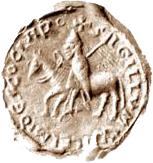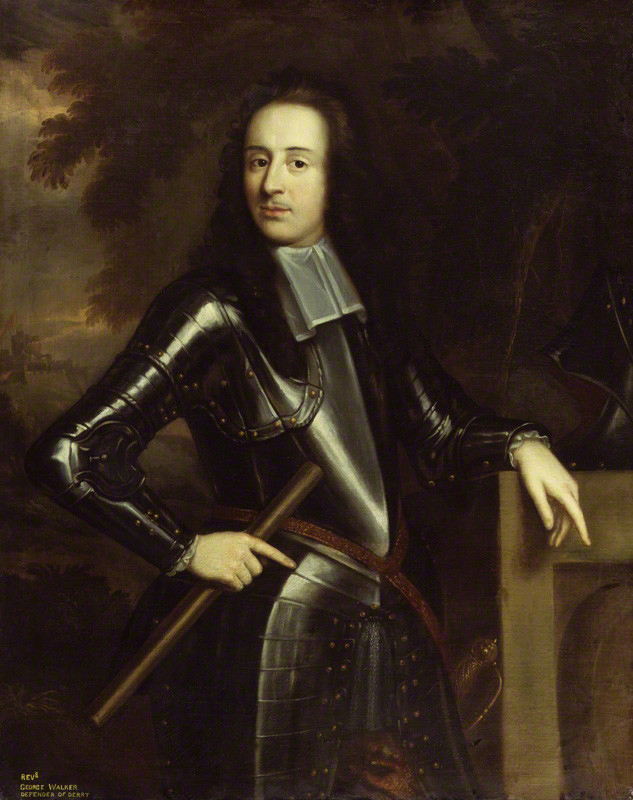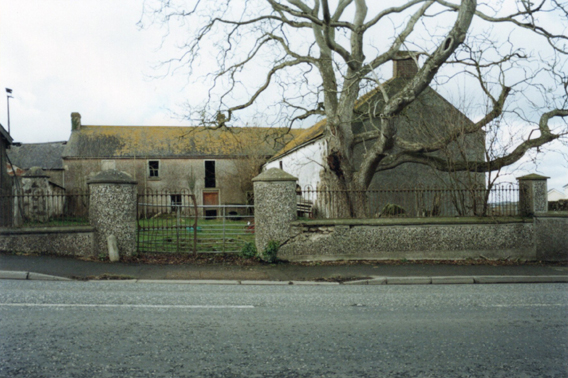The Walker family
The Walker family was very extensive in Co. Armagh in the eighteenth and nineteenth centuries. Many of that name farmed in the area. However, the most famous was the Reverend George Walker, who led, with others, the resistance of the people of Derry during the three-month siege by the army of king James II in 1689. George wrote a famous pamphlet called A True Account of the Siege of London-Derry and was feted by Londoners and Parliament when he visited England. He was present at the Battle of the Boyne the following year and was killed by a musket ball.
For interest, the following BBC documentary, only broadcast in Northern Ireland on 15 April 2013, outlines the events leading up to the siege, how Derry’s citizens held out for 105 days and its pivotal role for seventeenth-century Ireland, Britain and indeed Europe.
Because of what he did, many Protestant families were proud of their ancestral links to his family, and the Sinclairs were no exception. William Sinclair married Ellen Walker in 1840. Her father was Abraham Walker and her grandfather Thomas (Tom) Walker of Richhill (1747-1813). Tom Walker’s father was Abraham Walker of Annahill and then of Ballyleny, near Richhill, who lived from 1724 until 1786.
The Rev. George Walker had a brother, Godfrey Walker, who was High Sheriff of Armagh in 1678. It appears that Godfrey married Jane Vesey of Hollymount, Co. Mayo, and one of their sons, born c.1690, was another George Walker, later of Newry, who married Mary Greenlee. George and Mary are believed to have been the parents of Abraham Walker of Ballyleny (1724-1786). Although this ancestry is likely, it has yet to be verified by reference to primary sources.
Abraham Walker of Richhill (1791-1827)
Abraham and his father Tom were linen merchants in Richhill when linen production was at its height in the north of Ireland. Rich Hill, formerly known as Legacorry, was the best place to buy linen cloth and was used by residents of Armagh to buy clothing and food. However, by 1835, a few years after Abraham died, it had become a backwater, with just a few people attending a Saturday market. Apparently, this was a result of hostility by the Quakers, who deserted the town after one of their members had been killed in a riot there.
Tom Walker had seventeen children, which, even by the standards of the time was a lot. Unlike ‘Old Jack’ Redmond, who amassed a fortune by ‘a strict and undeviating regard to sobriety and industry,’ Abraham was a very different type of person. He died just a year after Old Jack, at the young age of 36 years:
He was an emblem of gentleness, meekness, and kindness, a loving husband, a tender parent and an honest man. He has left a loving wife and a large family of small and promising children to deplore his loss.
In 1827, his wife Jane was left to bring up alone John Walker Redmond Walker (11 years old), Ellen (9 years), Thomas (7 years), Mary Jane (7 years), and Anne Elizabeth (4 years, who was to marry William Browne). Jane married again and died in 1871 at her daughter Ellen Sinclair’s house in Warrenpoint.
Ellen married William Sinclair in 1840 at Grange House and then moved to Newry. Abraham Redmond Walker, another of Ellen’s brothers, joined William in his milling business and later set up on his own in Newry, retiring, like William, to Warrenpoint. The remaining Walker Redmonds, as they were known in the Richhill area, lived a riotous life, ‘living like like gentlemen of leisure, doing no work,’ and squandering the fortune and estate left to them by Old Jack.


